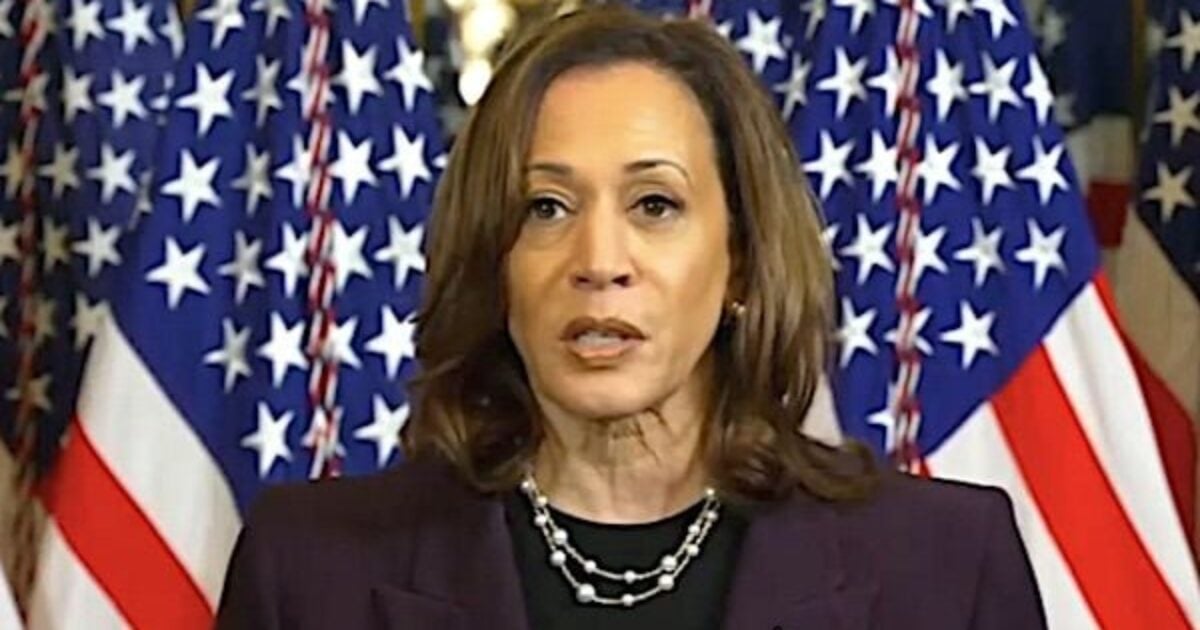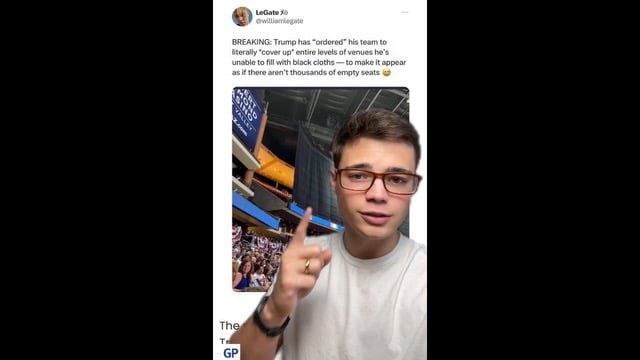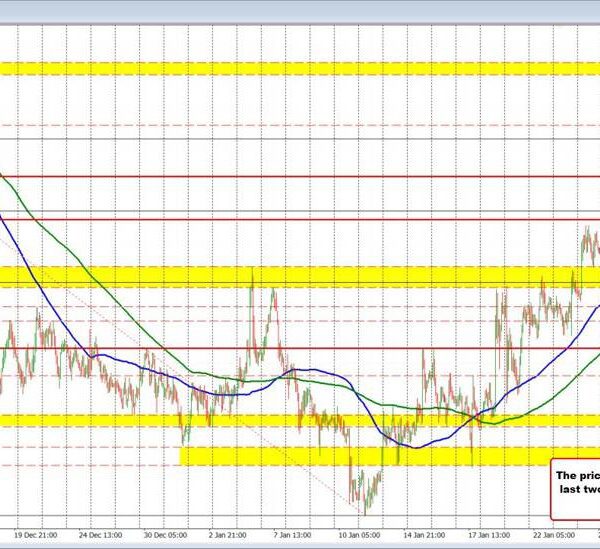2seventy bio, Inc. (NASDAQ:TSVT) Q2 2024 Earnings Conference Call August 7, 2024 8:00 AM ET
Company Participants
Jenn Snyder – Senior Vice President, Corporate Affairs
William Baird – Chief Executive Officer
Vicki Eatwell – Chief Financial Officer
Anna Truppel-Hartmannn – Chief Medical Officer
Conference Call Participants
Daina Graybosch – Leerink
Kelsey Goodwin – Guggenheim Securities
Operator
Good day, and thank you for standing by. Welcome to the 2Seventy Bio Second Quarter 2024 Earnings Conference Call. [Operator Instructions] Please be advised that today’s conference is being recorded.
I would now like to hand the conference over to your speaker today, Jenn Snyder with 2seventy Bio. Please go ahead.
Jenn Snyder
Thank you, operator, and good morning, everyone. Thank you for joining us. This morning, we issued a press release on our second quarter 2024 financial results. The press release can be found in the Investors & Media section of the company’s website at 2seventybio.com.
As a reminder, today’s discussion will include forward-looking statements related to 2seventy Bio’s current plans and expectations, which are subject to certain risks and uncertainties. These forward-looking statements include statements regarding our strategic plans, time lines and expectations with respect to sales, efficacy and perceived therapeutic benefits of ABECMA, the timing and review of additional studies and regulatory applications for ABECMA and statements regarding our financial conditions, expectations and future financial results, among others.
Actual results may differ materially due to various risks, uncertainties and other factors including those described in the Risk Factors section of our most recent Form 10-K, quarterly reports and other SEC filings. These forward-looking statements represent our views as of this call and should not be relied upon as representing our views as of any subsequent date.
You are cautioned not to place any undue reliance on these forward-looking statements, and except as required by law, we undertake no obligation to update or revise any forward-looking statements. On today’s call, we are joined by Chip Baird, Chief Executive Officer; and Vicki Eatwell, Chief Financial Officer; Anna Truppel-Hartmannn, Chief Medical Officer, is also on the line for questions during the Q&A.
And now I will turn it over to Chip. Chip?
William Baird
Thank you, Jenn, and thank you all for joining this morning. Today, we disclosed our second quarter 2024 financial results and recent business and operational updates. I’d like to walk through some of the business updates and then Vicki Eatwell, our Chief Financial Officer, will go into detail on our financials.
At the beginning of 2024, we took the strategic decision to focus 2seventy exclusively on ABECMA in the commercial business. While it was not an easy or risk-free decision, we continue to believe it was the right one given the situation. This quarter, we’re beginning to see the positive impact of this major strategic pivot.
We’re controlling what we can control and are accomplishing what we set out to do: Strengthening our financial position, streamline our cost structure and dedicating our resources to driving growth for ABECMA.
We succeeded in dramatically reducing our cost structure and have also strengthened the balance sheet in the second quarter with $43 million in proceeds from the sale of our oncology R&D business to Regeneron in April and the sale of our hemophilia A program and related megaTAL technology to Novo Nordisk in June.
The Novo deal was another important strategic transaction in our effort to further streamline and focus the business. We are grateful to the 2seventy team members who have since transitioned to Novo Nordisk and thank them for their incredible work.
The changes that we have enacted enable us to focus 100% of our effort and energy on ABECMA and I’m pleased to report that ABECMA performance in the US turned a corner in the second quarter following the FDA’s approval to treat earlier line patients. As expected and as previously guided, we achieved modest growth in revenue in the second quarter as we initiated our third line launch.
As we’ve previously shared, there’s roughly a two month lag between the time we enroll a patient and the time that patient receives ABECMA, and we recognize revenue. While revenue growth was modest, we were encouraged by the double-digit growth in patients undergoing apheresis, the first step in the ABECMA process and a leading indicator of demand.
We’ve also seen an increase in use among sites who have previously stopped prescribing ABECMA. Additionally, our commercial and launch messaging on the efficacy of ABECMA, a consistent safety profile has been well received by providers. While it’s too soon to say what the shape of the curve is in terms of the return to growth.
These indicators support our ongoing belief that ABECMA has an important role to play for patients living with myeloma. We’ve now entered the second half of the year, and the BMS and 2seventy teams remain focused on executing the third line launch of ABECMA.
Our launch is focused on clearly articulating the case for ABECMA, namely a competitive efficacy profile that is reproduced in the real-world setting, a well-established and manageable safety profile and a rapid manufacturing turnaround time with high rates of in-spec product.
With current three data in the label and real-world evidence that continues to mature, we believe we have competitive profile in earlier line triple class-exposed patients, which is the population with high unmet need.
We remain optimistic about ABECMA’s return to growth in the months to come. We’ll get to Q&A shortly. But for now, I’ll turn it over to Vicki to talk further about the second quarter results. Vicki?
Vicki Eatwell
Thanks, Chip. Second Quarter of ABECMA US revenues as reported by Bristol-Myers Squibb were $54 million, which was in line with our expectations and reflects ongoing expansion into the third line setting. As Chip stated, we are seeing a number of growth indicators, and we look forward to delivering ABECMA to an increased number of patients as we return to growth in the second half of the year.
As a reminder, we share equally in the profits or losses of the US ABECMA business with BMS, and we record collaboration arrangement revenue or loss each quarter, which largely represents our 50% share of revenue, cost of goods sold and selling expenses related to the US business.
In the second quarter, we reported collaboration revenue of $4.4 million related to our collaboration with BMS. Turning briefly to our cost structure. This quarter, we achieved a $28 million or 43% reduction in GAAP operating expenses versus the first quarter of 2024 or a $48 million, 57% reduction versus the same quarter last year.
Primarily driven by the completion of the sale of our Oncology R&D business to Regeneron at the beginning of the quarter and the streamlining of our operations beginning in the second half of 2023. We expect operating expenses to continue to decline into 2025 as our small remaining team prioritizes identifying further efficiencies.
We expect a revised net cash spend range of $40 million to $60 million in 2024, which is a reduction from our previously guided net cash spend range of $80 million to $100 million. Lastly, the income from the Novo transaction has helped us achieve profitability for the quarter with $24.9 million of GAAP net income.
And while quarterly profitability is for now a onetime event, we continue to see a path to cash flow breakeven and profitability as soon as 2025. With that, I’ll turn it back to Chip.
William Baird
Thanks, Vicki. As we close, I’ll reiterate that we are encouraged by what we’ve accomplished so far this year and set up for the second half of ’24. We’ve turned the corner with ABECMA and continue to believe in its potential to make a meaningful impact for patients in the earlier line setting.
We are singularly focused on delivering more time for every myeloma patient that we are able to serve which, together with our partners of BMS, remains our top priority. We will continue to carefully manage investor capital with a streamlined cost structure, we are focused on reaching breakeven and profitability.
Together with the rest of the 2seventy team, we will stay focused on these priorities to drive shareholder value. With that, we’re happy to take questions. Operator?
Question-and-Answer Session
Operator
Thank you. [Operator Instructions]. Our first question comes from the line of Daina Graybosch with Leerink. Your line is now open.
Daina Graybosch
Hi. Thanks for the question, guys. I’d like to understand more of the nature of the type of patients or sites that are starting apheresis in the third line. Any color you can give for either of those that would help us understand the growth going forward would be great.
William Baird
Thanks, Daina. I appreciate the question. In terms of the type of patients, it is a mix between third-line patients as well as later line, fourth-fifth line patients. It’s hard for us to separate those out for reasons having to do with HIPAA and other privacy concerns, we’ll have better understanding of that as we move forward.
But we clearly believe we’re seeing both late-line patients as well as starting to see the impact of these third-line patients. In terms of the sites, as we’ve said before, the major academic centers are the primary driver for us in terms of the business, in terms of the total patient volume.
And there, we’ve been encouraged to see some of the sites that had previously gone a long time without writing an ABECMA script coming back to ABECMA to using that again. And again, I think that’s a function of the broader label, the broader data set that we can detail against and the collective efforts of the BMS and 2seventy teams.
Operator
Thank you. Our next question comes from the line of Kelsey Goodwin with Guggenheim. Your line is now open.
Kelsey Goodwin
Oh, hey. Thanks for taking my question, and congrats on the progress this quarter. Maybe could you just provide some more color on the strategies that you’re using to differentiate safety and efficacy at these sites?
And then maybe if I can get a quick follow-up. Could you provide some more color on the sales assumptions that underlie how you think about breakeven for 2seventy? Thanks so much.
William Baird
Sure. Kelsey, thanks for the questions there. I’ll ask Anna to comment on the first question in terms of how we’re detailing in describing and kind of the key points on safety, the efficacy and how we present ABECMA.
And then, Vicki, maybe you can comment on breakeven and what that could look like. Anna, do you want to go ahead?
Anna Truppel-Hartmann
Yes. Thanks so much, Chip. Thanks so much, Kelly. So, for — first of all, in KarMMa-3, ABECMA show a significant superiority over standard of care with a very significant progression-free survival and all the other endpoints were significance as well across all subpopulations that we included in KarMMa-3 so we are clearly messaging on the consistent PFS benefit or efficacy benefit we have seen throughout all of our studies, including revert evidence that is very much consistent with what we’re seeing in the clinical trial.
Also, it is important to note that — and that was also part of the ODAC meeting, as you will remember, the bridging has gained much more importance over time. So that we are clearly messaging on the bridging therapy.
How important it is to bridge patients prior to ABECMA infusion because based on our KarMMa-3 data, we have seen greater outcomes or better outcomes influenced by decreased decrease disease burden at time of infusion, which is influenced by the bridging therapy and those data were presented last IMS that showed this.
And we have even seen a medium PFS of 20.7 months in those patients who had decreased disease burden post with post bridging and prior ABECMA. So that’s the second message. So, we are clearly messaging on efficacy that is further enhanced with optimized bridging therapy that is in the real world, even easier because in the earlier line setting there are more options available for bridging.
And last, but not least, is the safety profile. We — as seen in our USPI but also in every single data set we are publishing, the safety profile is well manageable, consistent throughout with low numbers and very, very low frequency of these delayed neurotoxicities such as Parkinson’s or GPS. We didn’t see anything in KarMMa-3.
And we do believe we have otherwise as well a very compelling safety profile with ABECMA. So, taking the efficacy and the safety together, we do believe we have a very strong profile. Yes, that does combined with a very reliable manufacturing process as well. I don’t know if anyone wants to add something to the messaging?
William Baird
No, well said. And then Vicki over to you on the question around breakeven.
Vicki Eatwell
Yes. Thanks, Kelsey, for your question. So, in terms of underlying sales assumptions for breakeven, we’ve guided in the past that we believe total US sales of less than $400 million makes us breakeven as a total company.
So obviously, we’re continuing to tighten 2seventy internal OpEx as we head into the end of the year and then into 2025. And so, it doesn’t take much for us to become breakeven as a holdco given the amount of cost savings that we’re delivering this year. Thanks, Kelsey.
Operator
Thank you. Our next question comes from the line of Vikram Purohit with Morgan Stanley. Your line is now open.
Unknown Analyst
Hi. Good morning and thank you for taking our question. This is Morgan on for Vikram. So I wanted to understand a bit more context on the early experience for the 3L launch for ABECMA, particularly with regards to volume of patients in this setting that have been treated with ABECMA to date and how the slope of the 3L uptake curve compared to the later line launch curve you initially experienced. Thank you.
William Baird
Hi Morgan, thanks for the question there. I think a little bit of the answer is going to be stay tuned. And when we’re able to report third quarter results in October, late October when BMS has their earnings and our call shortly thereafter, we can get into it more.
But certainly, the growth in [indiscernible] that we saw in the second quarter, which is meaningful growth, double-digit growth should — will pull-through into revenue growth here in the third quarter. So, we’ll be able to much better define the slope of that curve and how that curve should continue to change over time when we are on the same call three months from now.
But I think the early experience, as we’ve characterized, has been a positive one, an encouraging one. We have seen green shoots as measured by the growth in AFS, the additional sites kind of coming back to ABECMA the interactions that we’ve had with treating physicians and just a much broader data set to detail in a much larger patient population.
And the last thing I’ll say is that it is a different market than it was when we launched in the fifth line as the first commercial approved CAR-T and BCMA directed therapy where there was a big bolus there are patients waiting.
This is a much more fluid, much more dynamic market, much bigger market, which again, I think, plays to our favor and plays to some of the belief that Vicki just detail and in terms of it doesn’t take much for us to break even or better with this larger third-line label. So more to come there, but I think the signs we’ve seen give us a lot of reason to be optimistic about the curve.
Operator
Thank you. Our next question comes from the line of Salveen Richter with Goldman Sachs. Your line is now open.
Unknown Analyst
This is Srinathra on for Salveen. Thank you so much for taking our question, just in case you might have missed this earlier on the call, when might you start providing guidance around ABECMA sales.
And is there — do you have any updates around the timing for the Regeneron led pipeline assets and the next type data readout there?
William Baird
Yes. Thanks for those questions. I can take those. In terms of guidance, we haven’t provided revenue guidance. I think we want to get a couple of quarters the launch before we start to guide specifically there. So, stay tuned, but we’re not guiding on that one at this time.
And then from a Regeneron oncology assets that went to the Regeneron cell medicines business. That’s more their products now. So, we don’t have direct visibility or control over those anymore. We do have downstream participation in terms of commercial and late-stage milestones, but that’s not going to be a factor for us in certainly the next couple of quarters.
Really, the story there was moving those assets, those people those real estate into fertile soil with Regeneron and the longer-term capital base that they have. So that’s what we’ve done. And again, as we said at the top of the call, that streamlines our approach so we can focus exclusively on unlocking value with ABECMA.
Operator
Thank you. Our next question comes from the line of Yaron Werber with Cowen. Your line is now open.
Unknown Analyst
Hi, this is Jana on for Yaron. Thanks for taking our questions. A follow-up on the previous question asking about the types of patients that started operations in Q2. Are you hearing from physicians that there are any specific subsets of multiple myeloma patients that would preferentially receive ABECMA rather [indiscernible] bispecific? Thanks.
William Baird
No, thanks for the question, Jana. I think it’s a broad spectrum. As you said, it’s third-line patients. It’s later line patients. One of the things that I think is something we’re hearing about is just safety candidly.
And I think the risk with a sector of some of the more severe neurotox, the risk of Parkinson’s is something that weighs heavily, particularly for sites that have experienced one of those cases. And so again, there, I think we have a differentiated safety profile. And so that’s one that we hear about.
But again, I think it’s early days there, and we’ll start to understand better, more the split of patients and the third line or the later line as we move through the launch. But I’ll ask Anna to see if there’s anything to add here in terms of what we’re hearing from treated physicians.
Anna Truppel-Hartmann
Yes. Thank you, Chip. I would like to repeat again that all patients in our clinical trials as well as in reward evidence benefit from the use of ABECMA. So, there is no subgroup that have shown a better outcome or worse outcome. That’s why every patient can benefit.
So that’s also something that to be keep in mind. There is also the fact that also in previous conferences, clearly was recommended to use the CAR-T prior to TCEs. And so, whenever a patient can access and can receive a CAR-T or CAR-Ts given prior to a TCE, and that’s kind of what we are hearing throughout all of the KOLs and all of the conferences that are where the sequencing questions, et cetera, are being discussed.
And finally, it’s also a patient’s choice and safety matters a lot, especially in earlier lines, as Chip already mentioned, the low — very low frequency of Parkinson’s and also the well manageable safety profile is compelling for many physicians and patients, which also guides decision-making.
Operator
Thank you. Our question is from the line of Daina Graybosch with Leerink. Your line is now open.
Daina Graybosch
I think for the follow-up. We’re talking a lot about safety. And I wonder — this question is for Anna. As we see more data with ABECMA in the real world and with other CAR-T programs, if you have any updated view on what underlies the ABECMA differential safety versus the competing product?
And is it just Parkinsonism or the other of the neurotox, the lower grade that doctors are talking about? And are those meaningful to their choice to ABECMA as well? I’m wondering which one specifically
Anna Truppel-Hartmann
Yes. Thank you, Daina. A very good question. So, first of all, I’d like to say that, of course, rewiden data are coming in day after day. And so, we are always assessing everything that is published and everything that comes in and looking at that. In addition to that, of course, we are looking at our own safety database, where we are collecting all the adverse events, and we are also collecting of course, those events, specifically and looking at that.
And so, all of the events that we are seeing is really like the ICAN neurotoxicity, I think that’s very well published and also characterized. I don’t think that there is a huge difference between cars that we are knowing at this point in time.
It’s specifically the debate neurotoxicities, which also includes several policy, et cetera. And there’s also an effect of the terminology is a bit of a confusing fact and you’re right there that there needs to be more correct, better characterization, which events you’re really talking about.
But in general, everything that is non-ECA neurotoxicity seems to be at a very low frequency for ABECMA compared to other products. Does it answer your question, Daina?
Operator
Thank you. And I’m showing no further questions at this time. I’d like to hand the call back over to Chip Baird for closing remarks.
William Baird
Thank you, and thanks, everyone, for making time for the call today. We continue to focus on execution and returning to ABECMA growth. We’re available for follow-up with analysts and investors throughout the day, and we look forward to seeing everyone again on our third quarter earnings call and sharing the latest results there for ABECMA. Have a great day.
Operator
This concludes today’s conference call. Thank you for your participation. You may now disconnect.













